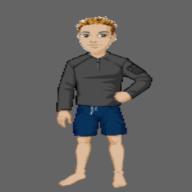鮟鱇魚o既生活環境同食物係咩?!
唔記得係邊度睇過話佢地生活係海底 接近地心
溫度好高 都會食魚仔 蝦仔
但係仲會食熔岩
唔係呀嘛!?
係咪真架?!
希望有expertsss可以答到我
我小學開始已經好想了解呢種生物
問過好多人世上係咪真係有呢種生物
有人話有 有人話冇
究竟係點!?
thanks =]
鮟鱇魚一問*
2007-03-22 6:42 am
回答 (1)
2007-03-22 9:48 am
✔ 最佳答案
英文資料就有 http://en.wikipedia.org/wiki/LophiiformesAnglerfish
Anglerfishes are bony fish in the order Lophiiformes.[1]
An anglerfish has a head of enormous size, broad, flat and depressed, with the remainder of the body appearing merely like an appendage. Anglerfish may grow to a length of 200 cm (6.5 feet); specimens of 90 cm (3 ft.) are common. Its maximum weight is 30 kg (66 US lbs).
圖片參考:http://upload.wikimedia.org/wikipedia/en/thumb/3/3f/Monkfish_at_Black_Head.JPG/180px-Monkfish_at_Black_Head.JPG
圖片參考:http://en.wikipedia.org/skins-1.5/common/images/magnify-clip.png
Monkfish in natural environment
Anglerfishes are, for the most part, deep-sea fish, though there are some families that have shallow-water representatives, including one, the frogfishes (family Antennariidae), that occurs only in shallow water. Examples of other anglerfish families that have some shallow water species are the goosefishes (family Lophiidae) and the batfishes (family Ogcocephalidae). These families also have deep water representatives. The deep-sea mid-water anglerfishes belong to the superfamily Ceratioidea.
The order was formerly known as Pediculati.
Predation
Anglerfishes are named for their characteristic method of predation, Angler being another word for fisherman. The anglerfish has three long filaments sprouting from the middle of its head; these are the detached and modified three first spines of the anterior dorsal fin. As with all anglerfish species, the longest filament is the first (the illicium). This first spine protrudes above the fish's eyes, and terminates in an irregular growth of flesh (the esca) at the tip of the spine. The spine is movable in all directions, and the esca can be wiggled so as to resemble a prey animal, and thus to act as bait to lure other predators close enough for the anglerfish to devour them whole. The jaws are triggered in automatic reflex by contact with the tentacle. (The netdevil anglerfish has similar growths protruding from its chin as well.)
As most anglerfish live mainly in the oceans' aphotic zones, where the water is too deep for enough sunlight to penetrate for photosynthesis to occur, their predation relies on the "lure" being bioluminescent (via bacterial symbiosis). In a related adaptation, anglerfish are dull gray, dark brown or black, and are thus not visible either in their own light or in that of similarly luminescent prey.[2]
The wide mouth extends all around the anterior circumference of the head, and both jaws are armed with bands of long pointed teeth, which are inclined inwards, and can be depressed so as to offer no impediment to an object gliding towards the stomach, but to prevent its escape from the mouth. The anglerfish is able to distend both its jaw and its stomach (its bones are thin and flexible) to enormous size, allowing it to swallow prey up to twice as large as its entire body.
Some benthic (bottom-dwelling) forms have arm-like pectoral fins which the fish use to walk along the ocean floor. The pectoral and ventral fins are so articulated as to perform the functions of feet, the fish being enabled to move, or rather to walk, on the bottom of the sea, where it generally hides itself in the sand or amongst sea-weed. All around its head and also along the body the skin bears fringed appendages resembling short fronds of sea-weed, a structure which, combined with the extraordinary faculty of assimilating the colour of the body to its surroundings, assists this fish greatly in concealing itself in places which it selects on account of the abundance of prey.
Reproduction
圖片參考:http://upload.wikimedia.org/wikipedia/commons/thumb/3/3d/Antennarius_striatus.jpg/180px-Antennarius_striatus.jpg
圖片參考:http://en.wikipedia.org/skins-1.5/common/images/magnify-clip.png
Antennariidae: striated frogfish, Antennarius striatus
圖片參考:http://upload.wikimedia.org/wikipedia/commons/thumb/7/71/Hamol_u0.gif/180px-Hamol_u0.gif
圖片參考:http://en.wikipedia.org/skins-1.5/common/images/magnify-clip.png
Linophrynidae: Haplophryne mollis
圖片參考:http://upload.wikimedia.org/wikipedia/commons/thumb/2/21/Chaunax_pictus.jpg/180px-Chaunax_pictus.jpg
圖片參考:http://en.wikipedia.org/skins-1.5/common/images/magnify-clip.png
Chaunacidae: pink frogmouth, Chaunax pictus: B.K. Phillips
圖片參考:http://upload.wikimedia.org/wikipedia/commons/thumb/a/a3/Ceratias_holboelli.jpg/180px-Ceratias_holboelli.jpg
圖片參考:http://en.wikipedia.org/skins-1.5/common/images/magnify-clip.png
Ceratiidae: Krøyer's deep sea angler fish, Ceratias holboelli
收錄日期: 2021-04-30 00:36:56
原文連結 [永久失效]:
https://hk.answers.yahoo.com/question/index?qid=20070321000051KK04836

